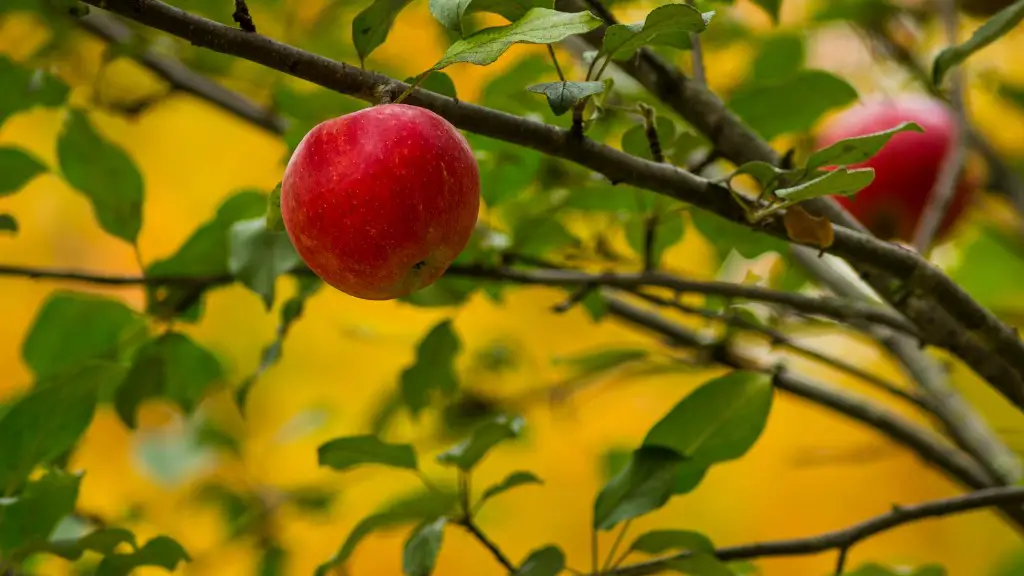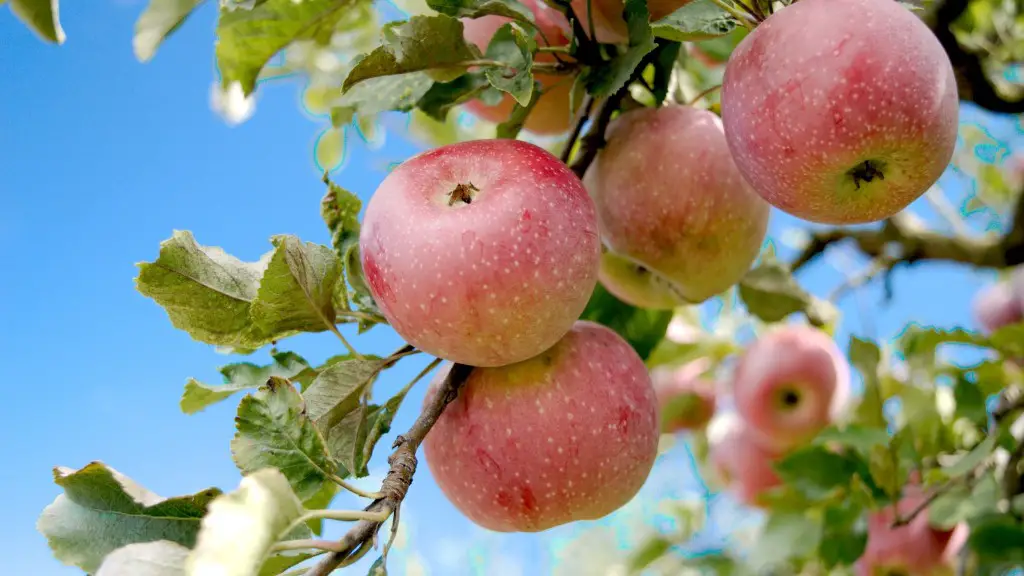Knowing how to trim an apple tree in the spring is essential for most orchard owners and gardeners. The timing of the pruning is critical to ensure the desired outcome, so it’s important to understand the process and to have the necessary tools. Here’s how to trim an apple tree in the spring for optimal growth:
1. Prepare the apple tree for trimming by cleaning off old dead bark from the branches. This will ensure the tree is ready for the task of trimming and will make it easier to identify the branches that need trimming.
2. Use a handsaw or pruning shears to trim away any dead, diseased or damaged branches. It’s important to get rid of these parts as soon as possible to avoid spreading the problem. Try to make clean, swift cuts in order to avoid damaging the tree further.
3. Next, thin the tree out to increase the airflow and light penetration. This is done by thinning branches and cutting off any cross branches that may be blocking the sunlight. This will help promote strong, healthy growth.
4. Finally, cut the top of the tree in order to promote dense growth at the base of the tree. Be sure not to cut too much off the top of the tree or you could end up with an overgrown tree.
Fertilizing Your Apple Tree in the Spring
In addition to pruning your apple tree in the spring, fertilizing is also an important part of tree maintenance. It’s important to fertilize an apple tree in the spring because it helps promote healthy growth and increases the fruit’s size. To fertilize your apple tree in the spring, start by applying a balanced fertilizer around the base of the tree at the start of the growing season.
To get the most out of your fertilizer, you should also apply it in mid- to late-May in higher amounts. This will ensure that any new spring shoots that have grown in the meantime are adequately nourished. Be sure to water the fertilizer into the soil for optimal absorption.
Lastly, consider applying a foliar spray to your apple tree in order to get the best results. A foliar spray is a liquid fertilizer that’s applied directly to the leaves and branches of the tree. This type of fertilizer is easily absorbed and will help provide your tree with the necessary nutrients for optimal growth.
Gathering and Disposing of Pruned Branches
Once you’ve finished trimming and fertilizing your apple tree, it’s important to remember to gather up the pruned branches and dispose of them properly. Pruned branches can harbor disease and pests, so they should not be simply left in the yard or compost pile.
The best way to dispose of pruned branches is to gather them up and take them to a local landfill or compost facility. You can also choose to burn them, but this is not recommended as it can create air pollution.
If you don’t have access to a landfill or composting facility, you can also use the branches for mulch or firewood. This is a great way to recycle them and get some use out of them before they decompose naturally.
Watering Your Apple Tree in the Spring
Watering your apple tree in the spring is essential for promoting healthy growth and fruit production. During the growing season, you should aim to water your tree two to three times a week, depending on the soil type and amount of precipitation. The water should be applied evenly but thoroughly, starting at the base of the tree and extending outward about two feet.
It’s important to avoid over watering, as this can lead to root rot and other issues. If you’re not sure how much water to give your tree, stick your finger in the soil around the tree and feel for moisture. If it’s still damp, then there’s no need to water it yet.
Also, try to water the tree in the early morning, when the soil is still cool. This will help minimize transpiration, the process in which the tree releases the water back into the atmosphere.
Mulching Your Apple Tree in the Spring
Mulching your apple tree in the spring is a great way to help protect the root system and promote healthy growth. It’s best to use organic mulch, such as wood chips or shredded bark, as this will break down over time and help provide additional nutrition to the soil. Apply the mulch after you’ve finished pruning your tree, as this will help protect it from any potential damage.
When applying the mulch, be sure to spread it evenly and in a thick layer, about two to three inches thick. Be sure to keep the mulch at least three to four inches away from the trunk of the tree to avoid any potential problems.
Finally, it’s important to remember to water the mulch after applying it. This will help it settle in and ensure that it doesn’t leach away any moisture from the soil.
Protecting Your Apple Tree in the Spring
In addition to trimming, fertilizing and mulching your apple tree in the spring, it’s also important to take measures to protect the tree from pests and diseases. One of the best ways to do this is to use an insecticide or fungicide spray once the buds start to open.
Insecticides and fungicides can be used to prevent and control pests and diseases that can harm the tree. They can also help prevent the spread of diseases if they are applied in the early stages of the growing season.
It’s important to apply the insecticide or fungicide correctly and in accordance with the instructions. Be sure to apply the spray in the late evening when the temperatures are cooler and there is no wind in order to get the best coverage.
Lastly, be sure to monitor the tree throughout the growing season for any signs of pests or diseases. Early detection is key for ensuring your tree gets the best possible protection.



